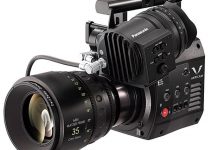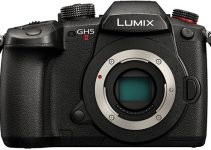Less than three months ago, Apple had stunned the filmmaking community with the introduction of their latest proprietary codec ProRes RAW, promising to deliver the flexibility of Raw while keeping file sizes as low as possible. Although the codec’s availability is still limited to a narrow selection of film gear and software applications, the initial feedback has been positive overall, with many creative professionals claiming that the format has a true potential to become the new industry standard in post.
Reasonably enough, many folks wonder how does ProRes Raw hold up against other established codecs such as the REDCODE Raw. Anthony Seratelli from Jersey Filmmaker sought the answer by comparing the two codecs in the video below.
The quick test was conducted using the RED Raven shooting REDCODE Raw with 10:1 compression and the Sony FS5 in conjunction with an Atomos Shogun Inferno for the ProRes RAW HQ recording. It’s important to note that as for the time being, editing ProRes RAW is still limited to Final Cut Pro X, which is why the videos were handled by this particular NLE.
For each shot taken during the test, Seratelli had both cameras with the exposure set to the right. Even though this approach is far from perfect, it was used to test out how much information can be retained when overexposing each shot.
To recover the highlights of the ProRes RAW footage, Seratelli brought down the master exposure using the color wheels in FCPX. As you can see from the video, the highlights were easily recovered, thereby making the shot usable again (except for the dreaded red tint in the skin tones clearly visible below).
Having this degree of control is an excellent testament to the amount of information one can capture when shooting in ProRes RAW. This means that if by accident you overexpose your footage while shooting, it is very likely that you’ll be able to recover your footage to a point where the shot becomes completely usable again.
While ProRes RAW is definitely a worthy addition to Apple’s codec lineup, it does hold one drawback. Depending on the ProRes RAW flavor you opt for (RAW or RAW HQ), the file sizes may be larger than expected. For example, while the REDCODE Raw footage was 1.06GB, the ProRes RAW HQ footage required over double the drive space (2.59GB).
On the other hand, processing REDCODE Raw footage in Final Cut Pro X seems to be a whole different story. Unlike ProRes Raw, once the footage is placed into the timeline, you won’t be able to simply adjust the master exposure in the color wheels pane. Instead, you have to access the Modify RED RAW Settings and tweak them from there.
After evaluating the results from Seratelli’s test, it’s safe to say that REDCODE Raw provides greater control over the image in post. You’re not only able to adjust ISO, but you can also modify a bunch of other essential exposure settings, something that you can’t do with ProRes RAW as of now. Nevertheless, REDCODE Raw exposure adjustments seem to be less precise than using the color wheels and master exposure dial in FCPX.
That being said, both formats pose their own challenges as well as they both should be treated differently in post. Even though we can’t make any solid conclusions solely based on this particular test, it’s clear that both codecs can retain a decent amount of information while being flexible and efficient enough to deliver the highest level of image quality regardless of the camera you plan to shoot with.
[source: Jersey Filmmaker]
Disclaimer: As an Amazon Associate partner and participant in B&H and Adorama Affiliate programmes, we earn a small comission from each purchase made through the affiliate links listed above at no additional cost to you.




